How to transform a webinar

Let’s be honest. You’re probably sick of webinars by now.
And if you’re not sick of them just yet, you’re probably more wary than you were a couple of months ago.
It’s not that webinars are objectively bad. They can be a valuable method of transferring information. They’re easy to access and easy to run.
But too many of them… well, suck. They can feel dull, heavy, and lacking in value.
The most obvious culprit here is Zoom fatigue.
It’s a contributing factor to your malaise, but the biggest issue with webinars is something more fundamental: design.
Most webinars fall flat because they just aren’t designed very well.
However, with just a few simple adjustments and a guiding hand, a webinar can be elevated into something so much more. And you don’t need to be a capital D designer to make it happen.
This post features 6 tips you can action right away to transform your webinars.
Before we get into it, let’s take a quick look at the landscape.
Building the bridge
Everything is pointing towards the future of learning being active. There’s tons of opportunity here, and when it comes to creating online events it’s going to become increasingly tough to make a case for webinars being the default format.
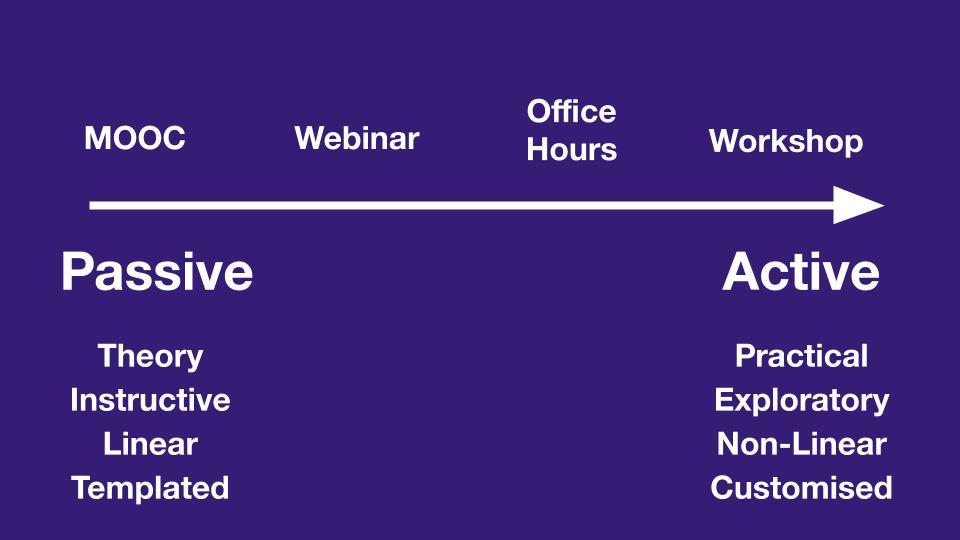
However, there can be additional preparation and investment in designing and developing active sessions. For the uninitiated, delivery of an active learning experience can feel like a high-wire act.
While the future is most definitely active, fully active sessions may not be right for every situation. You may have been tasked with running an event on top of other projects; the return on investment is uncertain; or you haven’t yet got around to building your workshop skills.
The good news is it’s possible to bridge the gap between passive and active.
Even better, it’s easy to do, and you can put in all the safety nets you need.
Let’s get into it.
1. It’s not about you, it’s about them
A lot of webinars follow a format that looks something like this:
- Host intro (5 mins)
- The host’s background, their stories of overcoming challenges and their hero’s journey to incredible success (15 mins)
- Topic background, host’s insights & some recent market trends grabbed from the relevant news outlet / expert of choice (25 mins)
- Note: valuable stuff buried somewhere in here
- Carefully-screened Q&A (10 mins)
- Host’s new book / course / consultancy offering (5 mins)
Yikes.
You’ve probably already spotted that this agenda is very much about the host, not the audience. As the host, it shouldn’t be about you, it should be about them.
In active learning, putting the participants first is the default setting, and the design incorporates everyone as part of the experience.
However, the construct of webinars means focusing on yourself instead of the attendees is a really easy trap to fall into. A webinar is anonymous, you can’t see anyone’s faces, and you have no idea what those faces are expressing.
But just because you can’t see who’s in the room, that’s no reason to make it all about you.
One easy way to start making it more about them is with your introduction. Here are 3 simple steps to take with an intro:
- Use Credibility & Humanity
- If in doubt, keep your intro under 1 minute
- Tailor your introduction to the audience, and especially to their objections
Note: Tailoring to the audience can manifest in a few different ways. Clay Hebert is a good example of using the introduction to make it about the audience. He smartly positions the agenda of his webinars against the tired self-serving narrative mentioned above (i.e. ‘most sucky webinars look like this…. our webinars look like THIS’). By signposting what’s coming, focusing on the stuff people really want, and keeping the intros short, the session feels more appealing straight away
Applying this principle of taking the focus off yourself is a good starter, but much more powerful is to shift the format completely.
Which leads us to…
2. Change the format
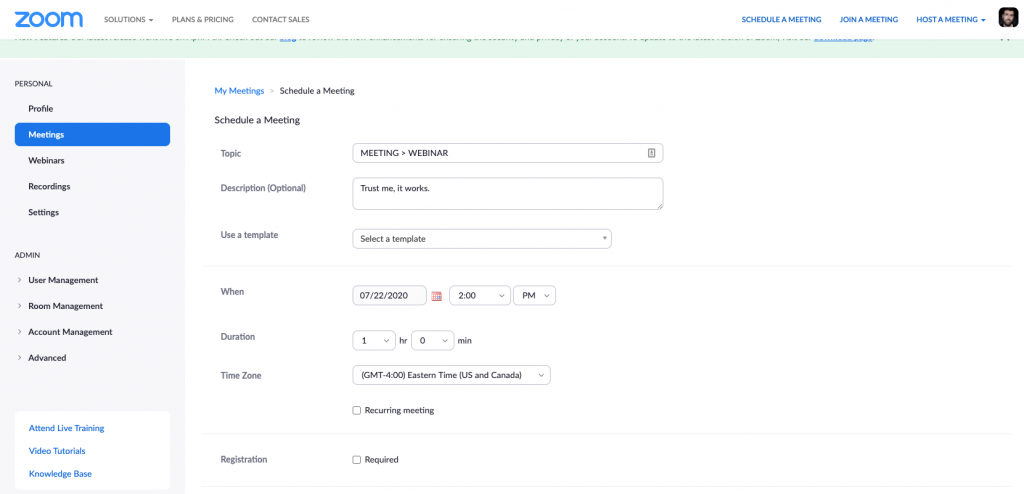
This one is simple. If you’re using Zoom, change the type of session from a Webinar to a Meeting.
On the surface, this sounds like a functional suggestion – using one option in a software system instead of another.
It’s far more than that. Just like shifting the focus from you to them, this is a mindset shift.
Doing. this means you will lose some features such as the anonymous Q&A function which can be handy for larger-scale events. You’ll also lose some control, but I believe the trade-off (especially for smaller events, say less than 100 people) is well worth it.
Using the Meeting format means you’re opening it up, not closing it down. Everyone has a voice, and they’re actually able to use it.
You’ll be able to see the humans in the room. Suddenly it’s a 2-way street. Guess what? They’ll probably be more engaged. And as a host, speaker, or even a member of the team behind the scenes, so will you.
Instantly, it’s a conversation; a group space; a shared environment. The chat is available. There are breakout rooms. Screen sharing! A whole new world.
And if you’re nervous about taking your hand off the rudder, there are a number of settings you can tweak to ensure attendees don’t go (too) wild.
Note: Here’s a primer on running workshops in Zoom
As you may imagine, I get a lot of resistance on this one. Sure, sometimes a webinar is just a better idea (think high-stakes, large-scale sessions where any mistake can cause multiple people to get fired).
However, a huge percentage of webinars should take the simple step of not being set up as webinars. You’ll be amazed at how much things open up.
3. Don’t just transfer… transform
Webinars, when done well, are very effective at transferring information and building knowledge.
One of the best ways of doing this is through lectures, especially those that are designed and delivered with multiple learning styles in mind.
However, this transfer is typically one way. And the type of transfer doesn’t tend to deviate much from words and charts.
Instead, what if you could transform the information? Pull it apart and show it in a different form? Share an idea through a metaphor they haven’t seen or heard before?
Or better still, could you encourage the audience to transform it?
Here’s some information. Go and do something with it.
This doesn’t need to be complex. Let’s try out an example.
Example: The Graph
Imagine you’re helping put together a webinar session on France’s economic recovery post-pandemic.
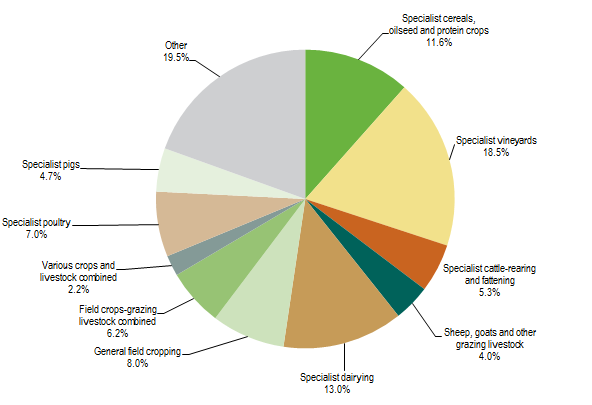
The host could share a graphic that looks at the breakdown of a particular industry (either by screen share, or sharing the actual file with the group).
However, instead of the regular graphic, they deliberately leave out a detail or two.

Instantly, there are questions and provocations:
- Which sub-industries are these?
- What do you think happens to the pie next year?
- Which other industries might have similar percentages?
Write down some ideas. Or share them in the chat.
Did you get it?
Are you surprised?
Well, you won’t believe what’s coming next….!
Here’s some information. Go and do something with it.
If you were in a fully active workshop-style session you could build all kinds of cool stuff around this, but a little can go a long way.
Even with just a nod to the audience and a little bit of stagecraft and suspense – something happens.
Don’t just transfer – transform.
4. Match the energy
When facilitating a group session – whether a workshop, meeting, class, or webinar – it helps to match your energy to the energy and needs of the room.
The same goes for speaking at an event: the softly spoken presenter won’t fair too well at a Tony Robbins gig; and a big, brash performance may be a bit much for a conference that brings together more introverted and introspective folks.
Note: sometimes these polarities can be magic, but generally it makes sense to match either the energy, the needs, or both
Unfortunately, this matching can be a bit trickier online. Nuance is lost, there are more distractions, the screen is 2D, and it’s often a single player game (no fellow participants in close proximity).
Even if you decided to make that switch from Webinar to Meeting and participants cameras are on, there are limitations on how much you can glean on the energy of the group, and how your own energy carries across.
A good rule of thumb online is to amp up your energy by 20% or so.
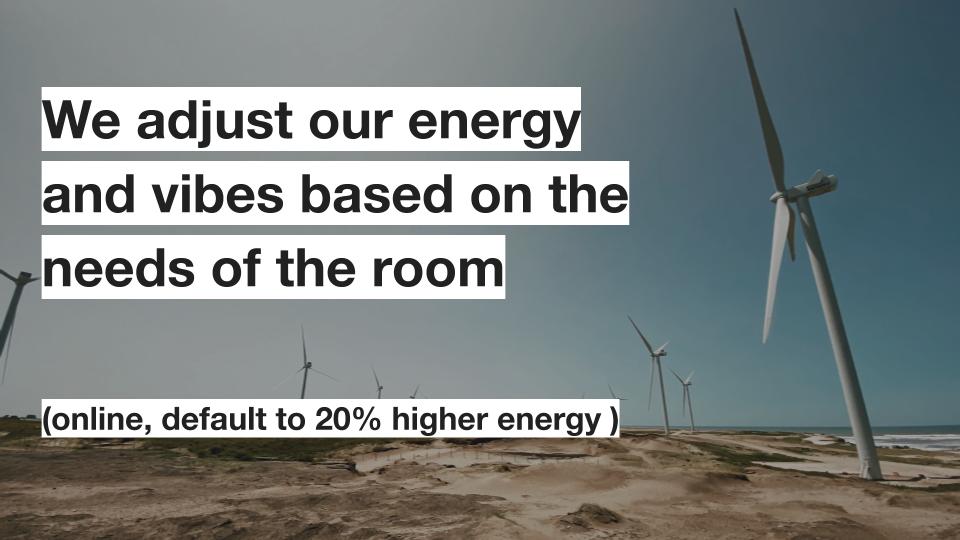
Get more your body in the picture (no, not all of your body; make your hand gestures more animated; increase those modulations in your voice tone; perhaps extend the pauses and the enunciation if you’re delivering insights that are searching or challenging.
Of course, you don’t want to become a pastiche: that’ll have the opposite effect, and why you want to increase energy by 20% rather than 80%.
Turning up the right dials a notch or two can lift any session.
5. Create a second space
Let’s move to the finale of your session.
Even if you decide for your webinar format to stay as a webinar, there’s still scope to open things up.
Why not offer attendees the chance to continue the conversation in a different environment?
I’m amazed how few people offer this as an option.
Sure, guest speakers are busy, but an extra 30 minutes is absolute gold for the attendees who are most highly engaged, curious, and hungry for more. This can be run a few days later in a facilitated Office Hours or similar format (gotta avoid that Zoom fatigue, right?)
Pro Tip: The percentage of people what want to stick around for this is also a good heuristic for testing how engaging the session was
You can provide abundance through the offer, but scarcity in its availability – with only 50, 20, or 10 places up for grabs. You may even want to make it gamified if you fancy really ramping up the narrative and the mystery.
Taking this route gives you, and more importantly your audience, the best of both worlds: there are the tight rails of the webinar where the trains run on time; and an open excursion for those who want to explore further.
6. Play the name game
This final tip is counter-intuitive. Don’t change what you’re offering.
Too often I see webinars (passive sessions) being pitched as workshops (active), when they’re not.
As more people get behind the future of learning, they’ll distrust sessions that portray themselves as active but end up being a snoozefest. You don’t want to get caught in this trap, especially when you’re starting out on your journey from passive to active.
But even after you’ve made adjustments to your webinar and are on the way to building that bridge, I encourage you to resist the temptation to call it a workshop for as long as you possibly can.
Why?
Surprise and delight.
Or in business-speak: underpromise, and overdeliver.
Case Study: Webinar Jiu Jitsu
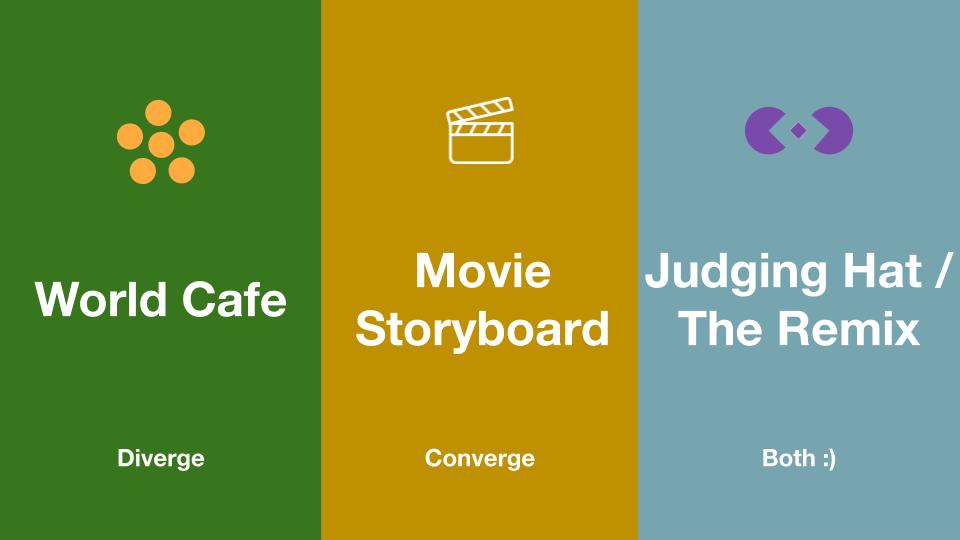
I experienced the value of underpromising and overdelivering first hand when I was invited to run what was ostensibly a webinar as part of a series. On seeing the advertising, my natural instinct was to push back against the conventions (yup, story of my life…) and request the session to be clearly billed as a workshop.
Instead, I realised there was a jiu jitsu move available. By being billed as a webinar, I could easily sprinkle a few unexpected active learning elements into the session.
It wasn’t much (especially relative to a fully-active workshop), but by underpromising and overdelivering I ended up with a bunch of emails in my inbox after the session asking me to come and host ‘webinars‘ for the attendees’ own companies and communities.
Even as a proponent of active learning, I’d much rather attend a webinar that makes me sit up and tune in, rather than a workshop that falls flat.
The language, positioning, and expectations matter.
Alright! That’s the lot for this time.
I’ve got a bunch more webinar ideas on my mind, but this post is already nudging 2000 words and I could do with a cup of tea.
If I can leave you with one final takeaway, it’s this: as you follow the path from passive to active, remember that you don’t need to get to your destination all in one go. Besides, the journey is where all the best experiences are.
For more on building better webinars, workshops, courses, and programs, head over to Wavetable or dive into my other education & learning guides